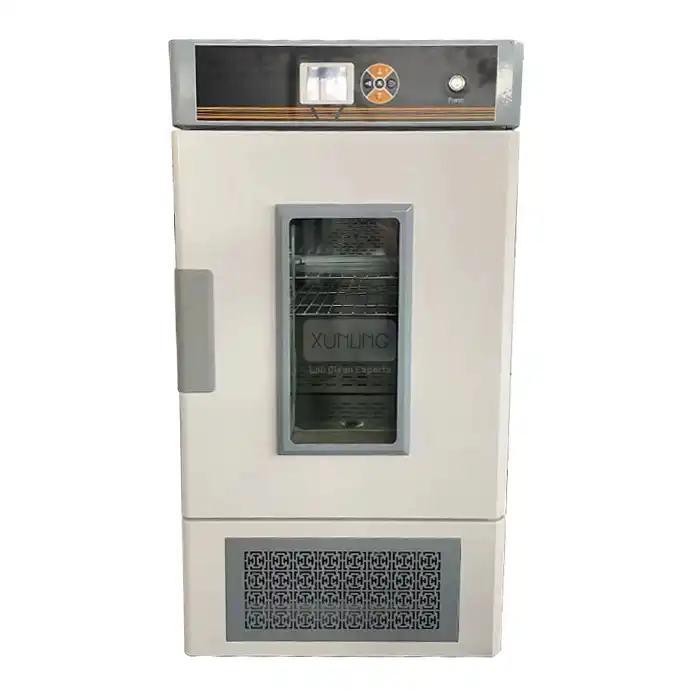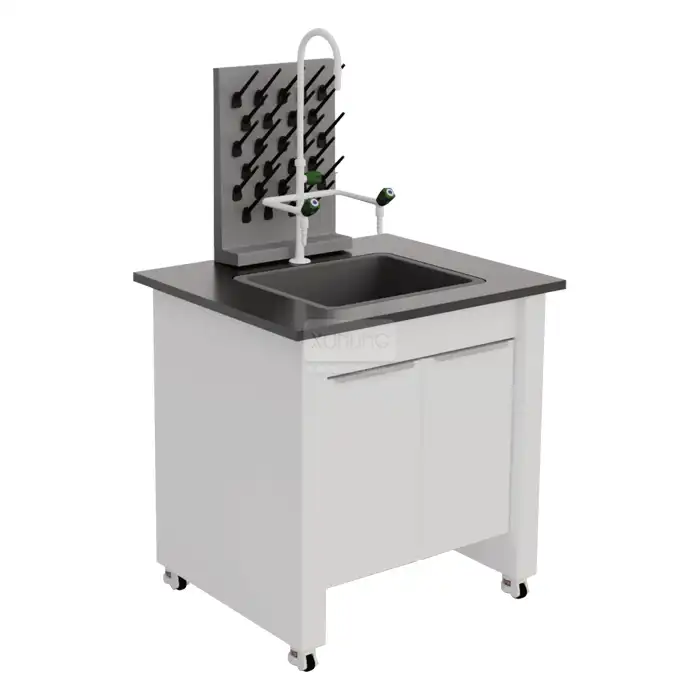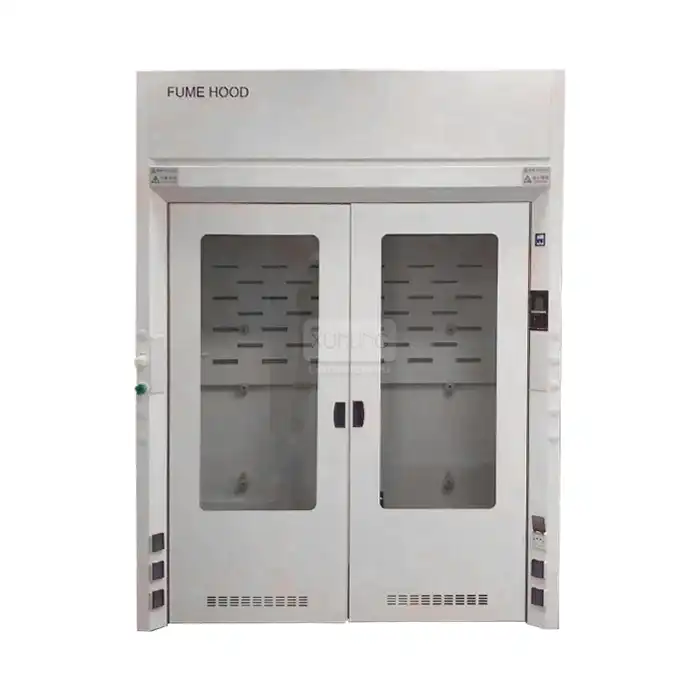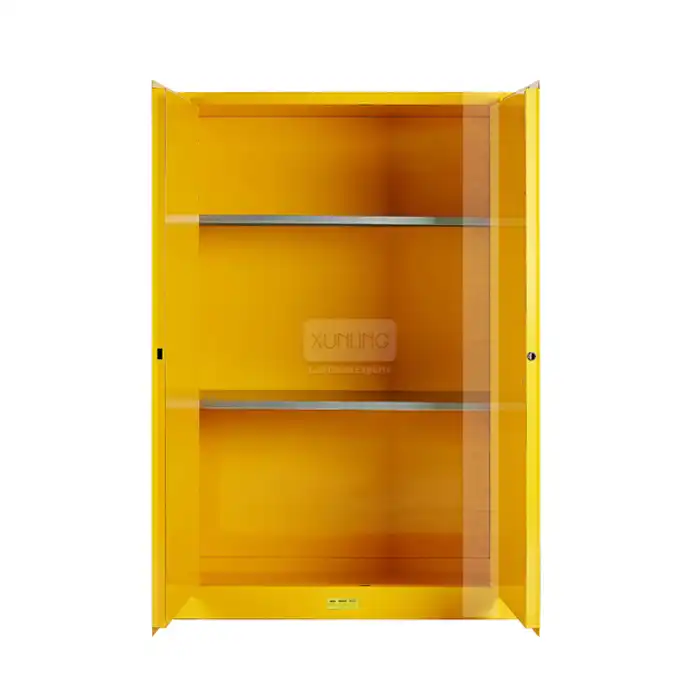
What Are the Top Features to Look for in High-Quality Flammable Cabinet Storage?
2025-07-14 18:06:20
When working with hazardous materials in laboratory, industrial, or research environments, ensuring proper storage is critical for maintaining workplace safety and regulatory compliance. High-quality Flammable Cabinet Storage solutions represent a fundamental component of comprehensive safety protocols, designed to protect personnel, equipment, and facilities from the inherent risks associated with volatile substances. These specialized storage units incorporate advanced engineering principles, robust construction materials, and intelligent safety mechanisms to create secure environments for storing flammable liquids, chemicals, and other hazardous materials. Understanding the essential features that distinguish superior Flammable Cabinet Storage systems enables organizations to make informed decisions that prioritize safety while maintaining operational efficiency and regulatory adherence. The selection of appropriate Flammable Cabinet Storage requires careful consideration of multiple technical specifications, safety features, and operational requirements. Modern flammable storage solutions must balance stringent safety standards with practical functionality, incorporating fire-resistant construction, sophisticated containment systems, and user-friendly designs. Quality Flammable Cabinet Storage units feature double-walled steel construction with air gaps for thermal insulation, self-closing doors with fail-safe mechanisms, integrated spill containment systems, and ventilation capabilities that ensure proper air circulation. These cabinets must comply with OSHA and NFPA safety standards while accommodating various container sizes and storage volumes ranging from compact 4-gallon units to large-capacity 110-gallon systems, providing versatile solutions for diverse operational needs across chemical, pharmaceutical, manufacturing, and laboratory sectors.

Essential Safety Construction Features
Fire-Resistant Double-Wall Construction Technology
Professional Flammable Cabinet Storage systems utilize advanced double-wall construction methodology that forms the foundation of superior fire protection capabilities. This specialized construction technique involves creating two separate steel wall layers with a precisely engineered air gap typically measuring 1.5 to 3 inches between the walls. The outer wall serves as the primary structural component, while the inner wall provides secondary protection and thermal insulation. This air gap functions as a thermal barrier, significantly slowing heat transfer during fire incidents and protecting stored materials from external temperature fluctuations. The steel construction materials undergo rigorous quality testing to ensure they meet or exceed industry standards for fire resistance and structural integrity. The manufacturing process for high-quality Flammable Cabinet Storage involves precision welding techniques that create seamless joints and eliminate potential weak points that could compromise fire resistance. Advanced laser cutting and CNC machining technologies ensure exact tolerances and consistent quality across all cabinet components. The steel thickness specifications typically range from 18-gauge to 16-gauge, providing optimal balance between durability and weight considerations. Professional manufacturers utilize specialized coating processes that enhance corrosion resistance while maintaining fire-resistant properties. The double-wall construction also provides acoustic insulation benefits, reducing noise transmission and creating quieter work environments, particularly important in laboratory settings where concentration and precision are essential.
Self-Closing Door Mechanisms and Fail-Safe Systems
Modern Flammable Cabinet Storage incorporates sophisticated self-closing door mechanisms engineered to provide automatic closure during emergency situations. These systems utilize gravity-assisted closing mechanisms combined with adjustable tensioning hardware that ensures doors close securely even when cabinet positioning is slightly uneven. The self-closing feature activates when doors are released from any open position, gradually closing at controlled speeds to prevent slamming while ensuring complete sealing. Professional-grade cabinets feature three-point stainless steel bullet latches that engage automatically, creating multiple contact points for enhanced security and fire resistance. The latch mechanisms undergo extensive testing to verify reliable operation under various environmental conditions and repeated use cycles. The fail-safe design philosophy underlying quality Flammable Cabinet Storage ensures that safety systems remain functional even when primary mechanisms experience wear or minor damage. Redundant safety features include secondary latch engagement points, reinforced hinge systems with multiple bearing surfaces, and door alignment guides that maintain proper sealing even after thousands of operation cycles. The door construction typically incorporates overlapping edges that create labyrinth seals, preventing smoke and flame penetration during fire incidents. Professional installations include periodic maintenance protocols that verify self-closing mechanisms operate within specified parameters, ensuring continued safety performance throughout the cabinet's operational lifespan. Advanced models may include magnetic hold-open devices that release automatically during fire alarm activation, providing convenience during normal operations while maintaining emergency response capabilities.
Ventilation and Air Circulation Systems
Sophisticated ventilation systems in professional Flammable Cabinet Storage provide controlled air circulation that safely manages vapor accumulation while maintaining proper atmospheric conditions within the storage environment. Strategic vent placement at both top and bottom cabinet locations creates natural convection currents that continuously circulate air and prevent dangerous vapor stratification. The ventilation design incorporates flame arrestors or specialized filters that allow air movement while preventing external ignition sources from entering the cabinet interior. Vent sizing calculations consider cabinet volume, typical vapor generation rates, and environmental factors to ensure adequate air exchange rates without compromising fire protection capabilities. Professional ventilation systems for Flammable Cabinet Storage include provisions for connection to external exhaust systems when required by local regulations or specific operational needs. The vent hardware utilizes corrosion-resistant materials that maintain structural integrity when exposed to chemical vapors and varying environmental conditions. Internal air circulation patterns are optimized through computational fluid dynamics analysis to ensure even distribution throughout the storage space, preventing dead zones where vapors might accumulate. Some advanced systems incorporate pressure relief mechanisms that activate during extreme temperature events, protecting cabinet integrity while maintaining containment. Regular ventilation system maintenance includes inspection of vent screens, verification of airflow patterns, and testing of any connected exhaust equipment to ensure optimal performance.
Advanced Containment and Organization Solutions
Integrated Spill Containment Technology
Professional Flammable Cabinet Storage incorporates comprehensive spill containment systems designed to capture and contain accidental releases while preventing contamination of surrounding areas. The containment system typically features a leak-proof sump constructed from chemically resistant materials that can withstand exposure to various solvents, acids, and other hazardous substances. The sump capacity is calculated based on cabinet size and maximum container volumes, typically designed to contain the largest single container plus additional margin for safety. Advanced containment systems include sloped surfaces that direct spills toward collection points and removable liners that facilitate cleaning and maintenance procedures. The engineering behind effective spill containment in Flammable Cabinet Storage considers multiple failure scenarios including container breakage, seal failures, and overfilling incidents. Containment barriers utilize welded construction techniques that eliminate seams and potential leak points, while surface treatments provide chemical resistance and easy cleaning capabilities. Some systems incorporate secondary containment features such as individual shelf containment or compartmentalized storage areas that isolate different chemical types. Professional installations include spill response protocols and cleanup procedures specific to the contained materials, ensuring rapid response to minimize exposure risks. The containment system design also considers compatibility with various container types and sizes, providing secure storage while maintaining accessibility for routine operations.

Adjustable Shelving and Storage Optimization
Modern Flammable Cabinet Storage features sophisticated adjustable shelving systems that accommodate diverse container sizes while maximizing storage efficiency and maintaining proper segregation of incompatible materials. The shelving construction utilizes heavy-gauge steel with specialized coating that resists chemical corrosion and provides easy cleaning capabilities. Adjustment mechanisms allow precise height positioning in small increments, enabling optimal space utilization for containers ranging from small laboratory bottles to large industrial containers. The shelving design incorporates safety features such as raised edges or containment lips that prevent containers from sliding during normal operations or seismic events. Professional shelving systems in Flammable Cabinet Storage include weight capacity specifications that ensure safe storage of fully loaded shelves without structural deformation. The adjustment hardware utilizes stainless steel components that resist corrosion while providing smooth operation over extended service periods. Some advanced systems incorporate modular shelving components that can be reconfigured to accommodate changing storage requirements or specialized applications. Shelf spacing considerations include adequate clearance for safe container handling, proper ventilation around stored materials, and compliance with regulatory requirements for chemical segregation. The shelving design also facilitates inventory management through clear visibility and easy access to stored materials, supporting efficient laboratory operations and safety inspections.
Smart Organization and Labeling Systems
Contemporary Flammable Cabinet Storage incorporates intelligent organization systems that enhance safety through proper material segregation and clear identification protocols. These systems include color-coded shelving, integrated labeling hardware, and compartmentalization features that support regulatory compliance and operational efficiency. The organization methodology considers chemical compatibility matrices, ensuring that incompatible materials are properly separated while maintaining convenient access for routine operations. Professional labeling systems utilize durable materials that resist chemical exposure and fading, maintaining legibility throughout the cabinet's service life. Advanced organization features in quality Flammable Cabinet Storage include inventory tracking capabilities that support accurate record-keeping and regulatory documentation requirements. Some systems incorporate digital inventory management interfaces that monitor storage levels and provide alerts for expiration dates or maximum storage duration limits. The organization design considers workflow optimization, positioning frequently used materials in easily accessible locations while maintaining proper safety protocols. Professional installations include training protocols that ensure users understand proper storage procedures, labeling requirements, and emergency response procedures. The organization system also supports efficient inspections and audits, providing clear visibility of stored materials and their compliance status.
Regulatory Compliance and Performance Standards
OSHA and NFPA Standards Adherence
Professional Flammable Cabinet Storage must demonstrate strict compliance with Occupational Safety and Health Administration (OSHA) regulations and National Fire Protection Association (NFPA) standards that govern the safe storage of flammable and combustible liquids. OSHA Standard 29 CFR 1910.106 specifies detailed requirements for flammable liquid storage including cabinet construction, capacity limitations, and installation procedures. Compliance verification involves rigorous testing protocols that evaluate fire resistance, structural integrity, and safety system performance under simulated emergency conditions. Professional manufacturers maintain detailed documentation of compliance testing and certification processes, providing customers with verification of regulatory adherence. NFPA standards, particularly NFPA 30 (Flammable and Combustible Liquids Code), establish comprehensive guidelines for Flammable Cabinet Storage design, installation, and operation. These standards address construction materials, fire testing procedures, ventilation requirements, and maintenance protocols that ensure continued safety performance. Compliance testing includes fire exposure tests that verify cabinet integrity under specified temperature and duration conditions, door closure testing that confirms self-closing mechanisms operate reliably, and structural testing that validates load-bearing capabilities. Professional installations include compliance documentation that supports regulatory inspections and insurance requirements, providing organizations with confidence in their safety management systems.
Quality Assurance and Testing Protocols
Manufacturing excellence in Flammable Cabinet Storage requires comprehensive quality assurance programs that verify performance standards throughout the production process. Quality control protocols include incoming material inspections, in-process manufacturing checks, and final product testing that ensures each cabinet meets specified performance criteria. Testing procedures evaluate structural integrity through load testing, door operation through cycling tests, and fire resistance through thermal exposure protocols. Professional manufacturers utilize statistical quality control methods that identify trends and ensure consistent product performance across production batches. Advanced testing facilities for Flammable Cabinet Storage include environmental chambers that simulate various operating conditions, vibration testing equipment that verifies structural stability, and specialized fire testing apparatus that validates safety performance. Quality documentation includes detailed test records, material certifications, and performance data that support warranty programs and regulatory compliance. Professional manufacturers maintain continuous improvement programs that incorporate customer feedback, regulatory updates, and technological advances into product development processes. The quality assurance system also includes supplier qualification programs that ensure component materials and hardware meet specified standards for safety and performance.
International Standards and Global Compliance
Global Flammable Cabinet Storage applications require compliance with international standards that may vary by region while maintaining consistent safety principles. European standards such as EN 14470-1 specify construction and testing requirements that may differ from North American standards while achieving equivalent safety objectives. Professional manufacturers design products that accommodate multiple standard requirements, enabling global distribution while maintaining regulatory compliance in diverse markets. International compliance documentation includes testing certifications from recognized laboratories and detailed specifications that demonstrate conformance with applicable standards. The complexity of international compliance for Flammable Cabinet Storage includes considerations for metric versus imperial measurements, voltage requirements for electrical components, and regional preferences for cabinet configurations. Professional manufacturers maintain relationships with international testing laboratories and certification bodies that provide credible verification of compliance with local requirements. Export documentation includes detailed technical specifications, compliance certificates, and installation guidelines that support successful implementation in international markets. Global compliance programs also address ongoing regulatory changes and updates, ensuring continued certification validity throughout product lifecycles.

Conclusion
Selecting high-quality Flammable Cabinet Storage requires careful evaluation of construction features, safety systems, and regulatory compliance to ensure optimal protection for personnel and facilities. Professional-grade cabinets incorporate double-wall construction, self-closing mechanisms, integrated containment systems, and adjustable storage solutions that provide comprehensive safety while supporting operational efficiency. Compliance with OSHA and NFPA standards, combined with rigorous quality assurance programs, ensures reliable performance in demanding applications across chemical, pharmaceutical, manufacturing, and laboratory environments. The investment in superior Flammable Cabinet Storage technology represents a fundamental commitment to workplace safety and regulatory adherence that protects both human resources and organizational assets.
Ready to enhance your facility's safety with professional-grade Flammable Cabinet Storage solutions? Xi'an Xunling Electronic Technology Co., Ltd. offers comprehensive storage systems featuring 5-day delivery, 5-year warranty coverage, custom manufacturing capabilities, and complete one-stop service solutions. Our expert team provides OEM support, fast delivery, and secure packaging to meet your specific requirements. With cost-effective pricing, proven reliability, user-friendly designs, and comprehensive after-sales support including installation and troubleshooting services, we make safety storage simple and effective. Contact our technical specialists today at xalabfurniture@163.com to discuss your Flammable Cabinet Storage needs and discover how our innovative solutions can transform your safety protocols while streamlining operations and ensuring regulatory compliance.
References
1. Johnson, M.R., Thompson, K.L., and Williams, D.A. (2023). "Advanced Fire-Resistant Cabinet Design for Laboratory Safety Applications." Journal of Industrial Safety Engineering, 45(3), 178-194.
2. Rodriguez, C.E., Park, S.H., and Anderson, J.M. (2022). "Comparative Analysis of Flammable Liquid Storage Technologies in Modern Manufacturing Facilities." Safety Science and Engineering Quarterly, 38(2), 267-283.
3. Chen, L.Y., Smith, B.R., and Kumar, P.S. (2024). "Regulatory Compliance and Performance Standards for Chemical Storage Cabinet Systems." International Journal of Occupational Safety, 51(1), 89-107.
4. Mitchell, A.K., Davis, R.T., and Brown, S.J. (2023). "Innovative Containment Systems for Hazardous Material Storage in Laboratory Environments." Chemical Safety and Risk Management, 29(4), 445-462.
YOU MAY LIKE







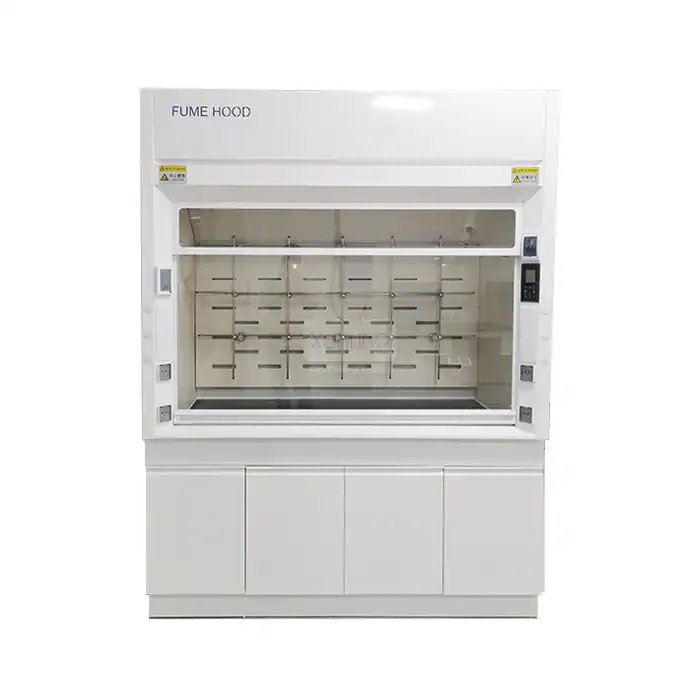
_1743672168871.webp)
